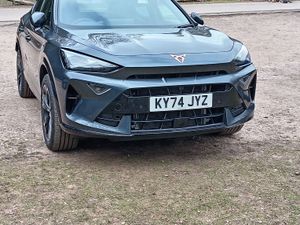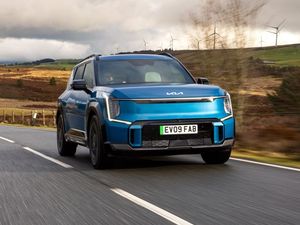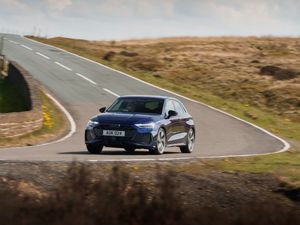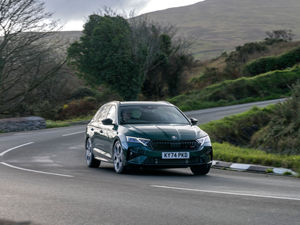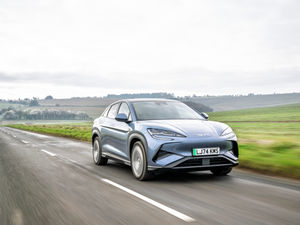First drive: The Peugeot Rifter blends practicality with a surprising dose of style
Ryan Hirons heads out to the South of France for a drive in Peugeot’s practical new van-based MPV – the Rifter
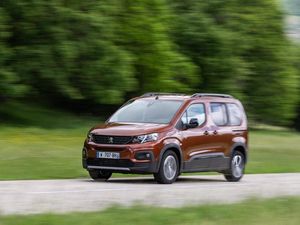
What is it?
The van-turned-MPV has been a mainstay in the market for a number of years now — if one that has been dwindling for a while.
The PSA Group — consisting of Peugeot, Citroen and now Opel/Vauxhall — has been right at the forefront of this particular game for some time with the big-selling Peugeot Partner Teepee and Citroen Berlingo twins, and it’s not giving up the ghost just yet. A new wave of these machines is on the horizon, and this is the first — the Peugeot Rifter.
With the ever-growing presence of SUVs though, does buying a van-based MPV still make sense in 2018?
What’s new?
Although the concept of a van-MPV is nothing new, the Rifter itself is a pretty fresh machine. In fact, it’s a new name — replacing the old Partner Tepee in the range and distancing itself from the Partner van it’s based on.
It’s got a new look as well — taking on Peugeot’s most recent (and we think pretty good looking) corporate design. Inside the cabin, the firm’s stylish i-Cockpit cabin also makes an appearance.
As for engine options, there’s nothing groundbreaking here with a choice of powertrains plucked from the rest of PSA’s range — namely PureTech 110 and 130 petrol engines, along with BlueHDi diesels in 75, 100 and 130 guises.
What’s under the bonnet?

We took the helm of a Rifter powered by the BlueHDi 130 unit — a 1.5-litre engine delivering 128bhp and 221Nm of torque, here paired up to an eight-speed automatic gearbox. No official word on 0-60mph times, but don’t expect it to be quick getting the MPV to its claimed 116mph top speed.
As for efficiency, Peugeot claims 65.7mpg is possible on the combined cycle with CO2 emissions of 114g/km.
Don’t expect it to be the last word in performance, but the diesel engine provides ample power to cart around the Rifter without ever feeling asthmatic. Gear changes from the automatic ‘box also feel seamless and, despite the van roots, there’s little noise from the engine itself — allowing for a relaxing ride.
What’s it like to drive?

The Peugeot Rifter was never destined to be a serious driver’s car, but the experience behind the wheel is a little less than stellar — its van roots shine through all too well.
Steering falls on the light side yet the Rifter requires a ton of input at low speed to navigate around relatively tight turns, while at higher speeds body roll is incredibly present — perhaps to be expected for such a tall machine.
It doesn’t ride particularly well either. While it’s soft enough to remain comfortable on a cruise, it does mean the Rifter is easily unsettled by speed bumps and potholes. On the plus side, tons of visibility combined with compact dimensions allow for easy placement on the road and makes parking a breeze.
How does it look?

Style isn’t the name of the game in this market segment, but the Rifter is a pretty good-looking thing in its own right. The introduction of Peugeot’s corporate style pays off here — with the angular language sitting well on the van dimensions.
Compared with SUVs — even those from Peugeot — it’s not a fashion icon but does manage to pack genuine practicality into a good-looking package.
Looking for a bit more? GT-Line models bring the option of 17-inch alloy wheels and body-coloured bumpers — although we’d be inclined to skip these on a machine built purely for function over form.
What’s it like inside?

Step into the driver’s seat of the Peugeot Rifter and you’ll be greeted by the firm’s i-Cockpit cabin which is slowly but surely taking over its entire range. It brings a high-positioned instrument cluster, eight-inch touchscreen infotainment system (on Allure and higher models) along with a compact, race car-esque steering wheel to create an encapsulated feel.
While it certainly looks good, the steering wheel feels rather out of place in a car of this type — and the futuristic, premium look is offset by the use of hard plastics pretty much everywhere.
This may just be meaningless to many buyers though, who are looking for pure practicality. We’re glad to report the Rifter offers tons of that. The three rear seats all feature Isofix mounting points meaning all the kids can come along for the ride in child seats, while a 775-litre load capacity with all seats in place means you can fit more than enough for a family week away in the back with ease. Still not enough? A seven-seat version will be landing in the UK in 2019.
What’s the spec like?

Pricing for the full range has yet to be confirmed, but we do know that the Rifter GT-Line BlueHDi 130 as tested here will be available from £24,220.
For the money, equipment on offer includes keyless start, automatic dual-zone climate control, satellite navigation and tons of gloss black exterior highlights to bring a stylish edge — on top of LED daytime running lights, an eight-inch infotainment system with Apple CarPlay and Android Auto support amongst others.
While equipment levels are good for the price, we’d be inclined to save some money and opt for a lower trim model if practicality is mostly what you’re looking for here. If sat nav is a must, go for the Allure models — Apple CarPlay and Android Auto rivals, and betters, most manufacturer infotainment systems on sale today.
Verdict

The Peugeot Rifter manages to bring a hint of style to a segment often not associated with it, while also retaining the practicality and daily usability MPV buyers will be hoping to expect — and although it may struggle to hide its roots as a van, we can forgive that.
If you’re looking to turn heads, you’d be better off opting for a smaller SUV but if sheer practicality is the priority, the Rifter offers that along with good levels of equipment should you need it — although we’d be inclined to keep the options list boxes ticked to a minimum.

